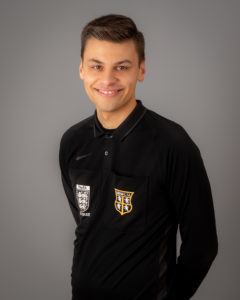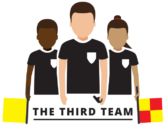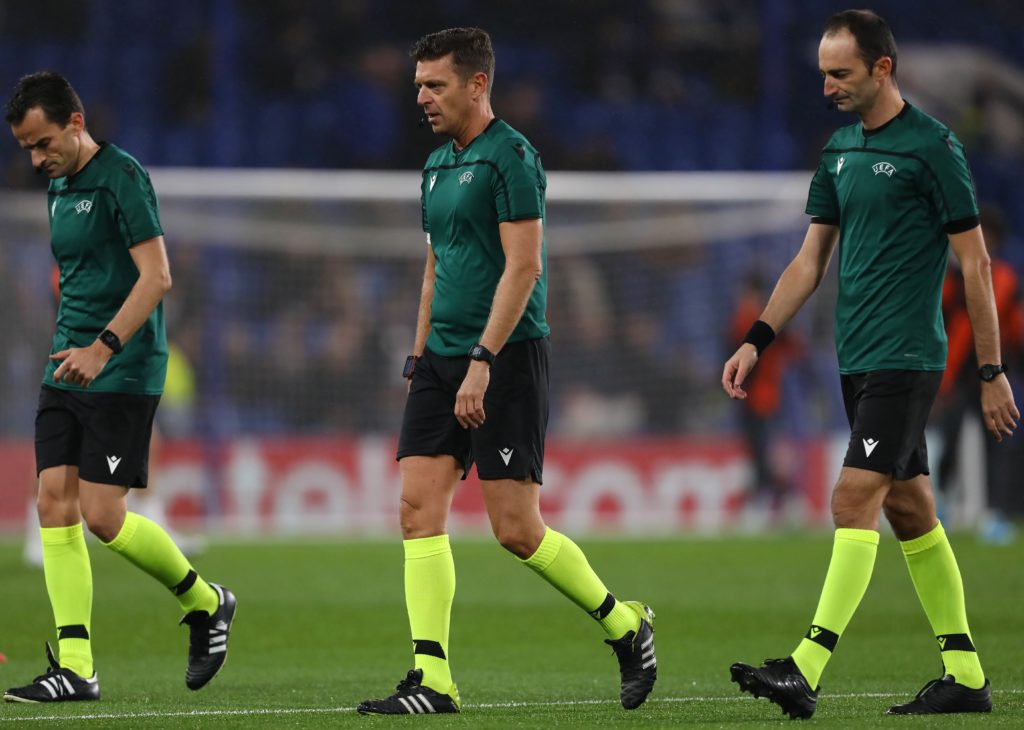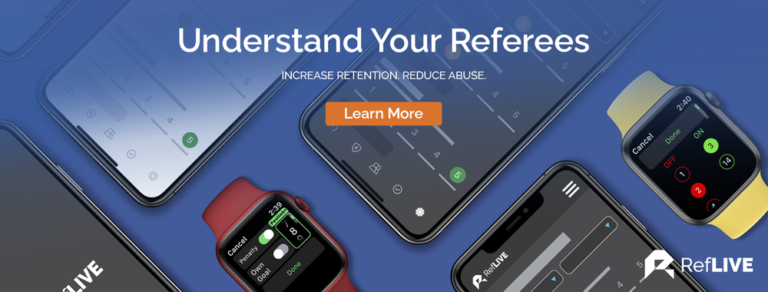Visualisation is something to be experienced, a training experience, a preparatory experience and a warm-up experience. Visualisation is a skill that can improve and benefit referees.
Whether you realise it or not, you visualise when officiating or mentally rehearse naturally. Everyone thinks in pictures. Some referees unintentionally have recurring images of missed opportunities to apply law, injuries, mistakes and losses of match control.
The one thing that separates elite officials from good officials is that elite officials utilise the power of guided imagery or visualisation. Imagery has long been a part of elite level sport and many professional referees have mastered the skill with the help of Sport Psychologists and Mental Game Coaches.
Guided visualisation or imagery for officials is consciously controlling the images or directing a law application script in your head. An example of guided imagery that you have unknowingly used is when your coach or manager was teaching you a new skill. You created an image in your mind’s eye of how the skill should look or the successful execution of the skill.
Imagery or guided visualisation is purposely rehearsing a skill, routine or performance in your mind’s eye to program your body for success. However, sports visualisation or mental imagery is more than just a visual experience. Many referees prefer to feel movements and engage in the kinaesthetic past of imagery.
Olympians and Visualisation in Other Sports
In the build up to the 2016 Rio Olympic Games, many athletes followed the successful blueprints laid out by their 2014 winter Olympic counterparts who competed successfully in Sochi.
Canadian bobsleigher Lyndon Rush credited imagery with helping him keep his head in the game throughout the long, arduous four years of training between the 2010 and 2014 Olympic Games.
“I’ve tried to keep the track in my mind throughout the year. I’ll be in the shower or brushing my teeth. It just takes a minute, so I do the whole thing or sometimes just the corners that are more technical. You try to keep it fresh in your head, so when you do get there, you are not just starting at square one. It’s amazing how much you can do in your mind.” – Lyndon Rush, Canadian Olympic Bobsleigher
Three-time Olympic freestyle skier, Emily Cook, described how her specific imagery scripts and mental rehearsal involving all the senses have helped her maintain longevity in her sport.
“Visualisation, for me, doesn’t take in all the senses. You have to smell it. You have to hear it. You have to feel it, everything. I would say into a [tape] recorder: ‘I’m standing on the top of the hill. I can feel the wind on the back of my neck. I can hear the crowd,’ kind of going through all those different senses and then actually going through what I wanted to do for the perfect jump. I turn down the in-run. I stand up. I engage my core. I look at the top of the jump. I was going through every little step of how I wanted that jump to turn out.” – Emily Cook, Three-time Olympic freestyle skier
Nicole Detling, a sports psychologist who has worked with the United States Olympic team explains the importance of having a multi-sensory approach when visualising.
“The more an athlete can image the entire package, the better it’s going to be.” – Nicole Detling, Sports Psychologist
Michael Phelps and the 2016 Olympics
Bob Bowman has been Michael Phelps’ coach since he was a teenager and has included mental imagery or visualisation as a part of Phelps’ mental training over the years they’ve worked together.
Bowman instructed Phelps to watch a “mental videotape” of his races every day before he went to sleep and when he woke up in the morning. Phelps would visualise every aspect of the swim in a winning race starting from the blocks and culminating in his celebration after the race was won.
Bowman would instruct Phelps to “Put in the videotape” during training sessions to help motivate Phelps to push harder. He believes that mental imagery helped Phelps develop the habit of success.
“We figured it [imagery] was best to concentrate on these tiny moments of success and build them into mental triggers… It’s more like his habits had taken over. The actual race was just another step in a pattern that started earlier that day and was nothing but victories. Winning became a natural extension.” – Bob Bowman, Olympic Swimming Coach
Why is Visualisation or Mental Imagery Such a Powerful Tool for Success?
When referees visualise or imagine successfully delivering a game, they actually stimulate the same brain regions as you do when you physically perform that same action.
Visualisation in sports or mental imagery is a way of conditioning for your brain for successful outcomes. The more you mentally rehearse your decision making processes, the more they become habituated in your mind.
Think of visualisation as a pre-match mind palace. Many officials incorporate this into their routine before a big game to cement their gameplan and become familiar with what to expect under match pressure conditions.
Referees who use visualisation can eliminate some of the unknowns that create pre-match anxiety. When officials use visualisation, they not only see the action unfold but truly feel the event take place in their mind’s eye. Visualisation for a referees is the tool great performers use to help them succeed and stay on top of their game mentally.
How to Use Visualisation for a Successful Refereeing Performance:
- Visualise the outcome you want – When you mentally rehearse making decisions in your head, make sure you see the game flow as you want it to during the 90 minutes. If your mental images turn negative, stop the mental tape, rewind and restart then visualise again to see the performance you want to have.
- Use all your senses from a first-person perspective – Visualise your officiating performance in detail. What would you see, hear, feel, smell and taste. Feel how your body would feel as you go through the motions of making difficult decisions under pressure. Try adding in some physical movements that coincide with the visualised images. Feel the excitement of successfully achieving accuracy in your decision making.
- Practice frequently – Mental rehearsal for referees is a skill that becomes better with repetition. Practice your visualisation or imagery as often as you physically train.
- If you want to take advantage of the power of visualisation, work alongside a Mental Toughness Practitioner to help incorporate this essential skill into your training.
At The Third Team I work individually and in collaboration with different professionals where I have developed workshops associated with Resilience and Mental Toughness Development to help referees. The workshops are interactive, where referees are encouraged to open up and share their experiences to help each other.
Feel free to contact me if you’d like to know more about my workshops and how I could help you or your officials.
Best Wishes,

Nathan Sherratt
Referee Educator & Managing Director of The Third Team

Nathan Sherratt
Nathan Sherratt, Referee Educator, Resilience Trainer and Managing Director of The Third Team. A Mental Toughness Practitioner based in County Durham, North East England.


